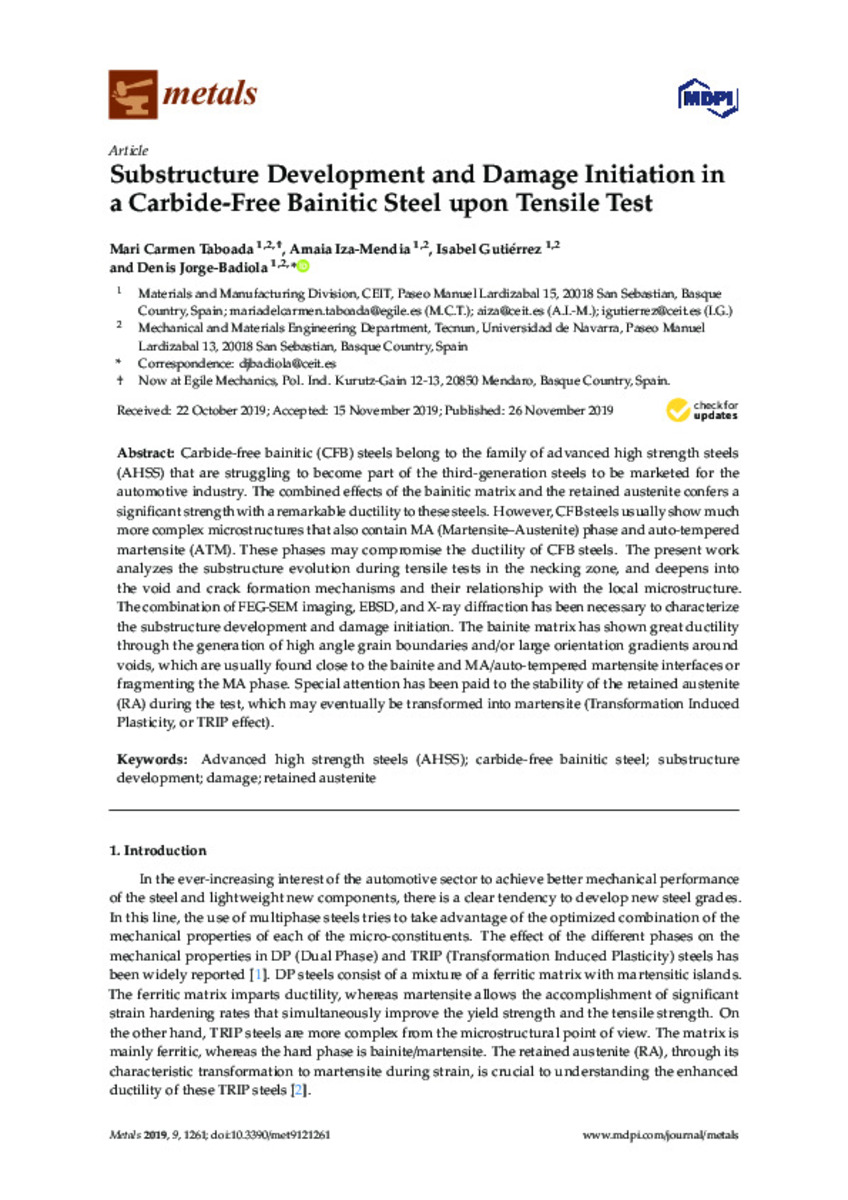Substructure development and damage initiation in a carbide-free bainitic steel upon tensile test
Palabras clave :
Advanced high strength steels (AHSS)
Carbide-free bainitic steel
Substructure development
Damage
Retained austenite
Fecha de publicación :
2019
Nota:
Licensee MDPI, Basel, Switzerland. This article is an open access
article distributed under the terms and conditions of the Creative Commons Attribution
(CC BY) license (http://creativecommons.org/licenses/by/4.0/).
Cita:
Taboada Legaza, M.C.(Maria del Carmen); Iza-Mendia, A. (Amaia); Gutiérrez, I. (Isabel); et al. "Substructure development and damage initiation in a carbide-free bainitic steel upon tensile test". Metals. 9 (12), 2019, 1261
Aparece en las colecciones:
Estadísticas e impacto
0 citas en

0 citas en

Los ítems de Dadun están protegidos por copyright, con todos los derechos reservados, a menos que se indique lo contrario.







